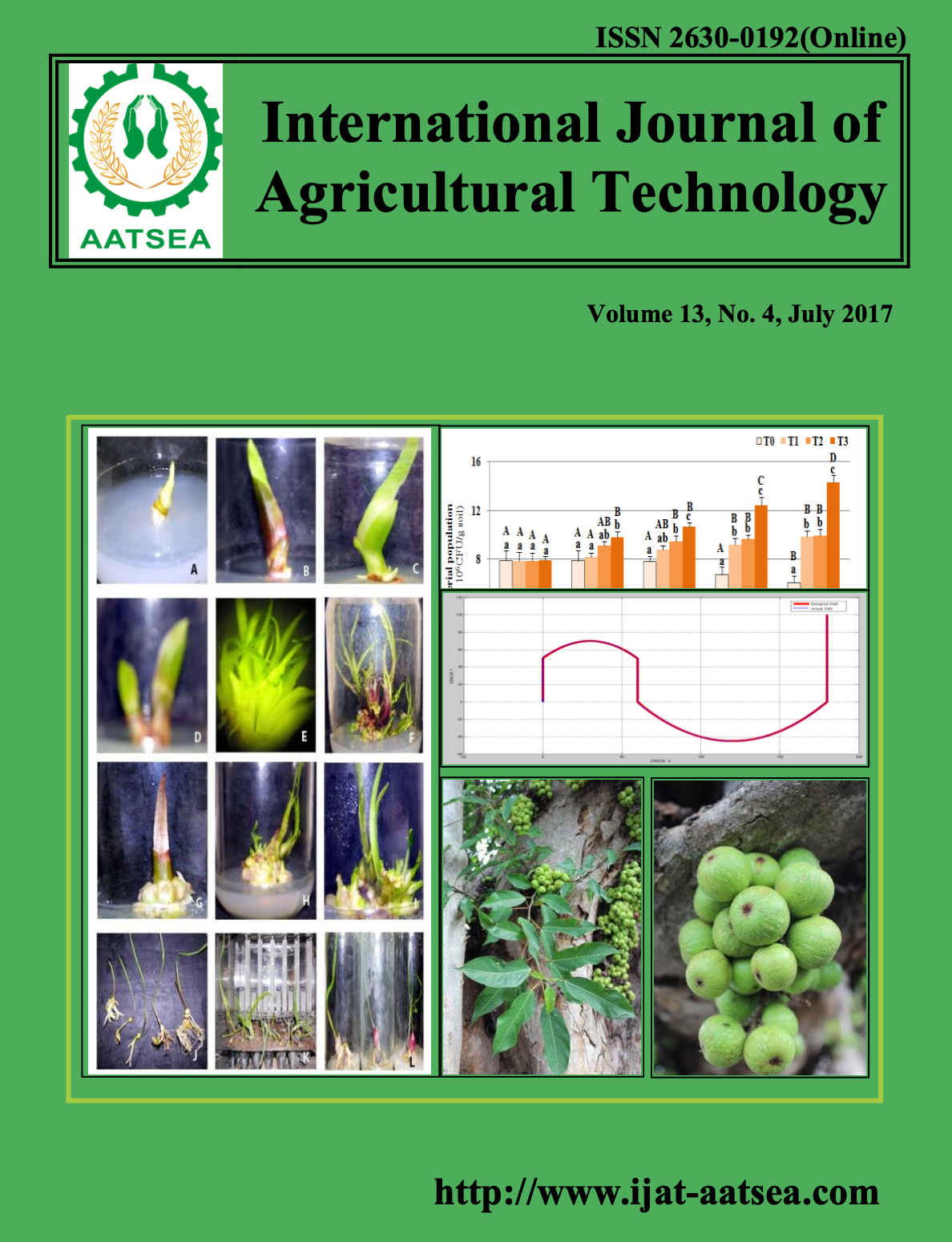Perina nuda F. (Lepidoptera: Lymantriidae):an important leaf eating caterpillar of fig trees
Main Article Content
Abstract
Some biological studies of Perina nuda Fabricius was conducted under the laboratory conditions (33o C; 65 %RH). This moth species undergoes complete metamorphosis with four stages in its life cycle: egg. larva, pupa and adult. Mating copulation occurred at night and an female laid eggs in group averaged 46 eggs/group. The number of egg laid by each female of Banyan tussock moth was 168-387 eggs. The egg incubation period lasted for 5.50 days. The caterpillar hatched after that. They went through the growth and development processwith 7 larval instars and the developmental time for the 1st to the 7th larval instar was 2.28, 3.08, 3.02, 3.42 3.67, 3.34, and 6.10 days, respectively. The larvae have urticating hair and used as a defensive weapon. The hairy setae was carried on thought the pupa stage. Adult moths emerged after xxx -day long pupal stage. Life span was found difference between gender. The Banyan tussock moth female tended to live longer than the male insect (7.00 and 5.44 days, respectively). Their larvae are known as leaf eating caterpillars with broader host plants and feed on leaves of fig trees, shrub and lianas in the genus Ficus.
Article Details

This work is licensed under a Creative Commons Attribution-NonCommercial-NoDerivatives 4.0 International License.
References
Butani, D. K. (1979). Insects and fruits. Periodical expert book agency, Delhi, India.
Fibiger, M. and Lafontaine, J. D. (2005). A review of the higher classification of the Noctuidas (Lepidoptera) with special reference to the Holarctic fauna. Esperians 11:7-92.
Hill, D. S. (2008). Pest of crops in warmer climate and their control. Springer science, UK.
Hill, S. (1994). Agricultural Entomology. Timber Press, Oregon.
Munisppan, R., Shepard, R. M, Carner, G. R. and Ooi, P. A. C. (2012). Arthropod pests of horticultural crops in tropical Asia. Clemson University, USA and AVRDC - The World Vegetable Center, Thailand.
NBAIR. (2013). Insects in indian agroecosystems. Ministry of environment and forests, India.
Su, X., Tai, K. C., Shih, M. P. and Hsuan, P. J. (1983). Two nuclear polyhedrosis viruses of two forest insect pests. Scientia Silvae Sinicae 19:114-115.


